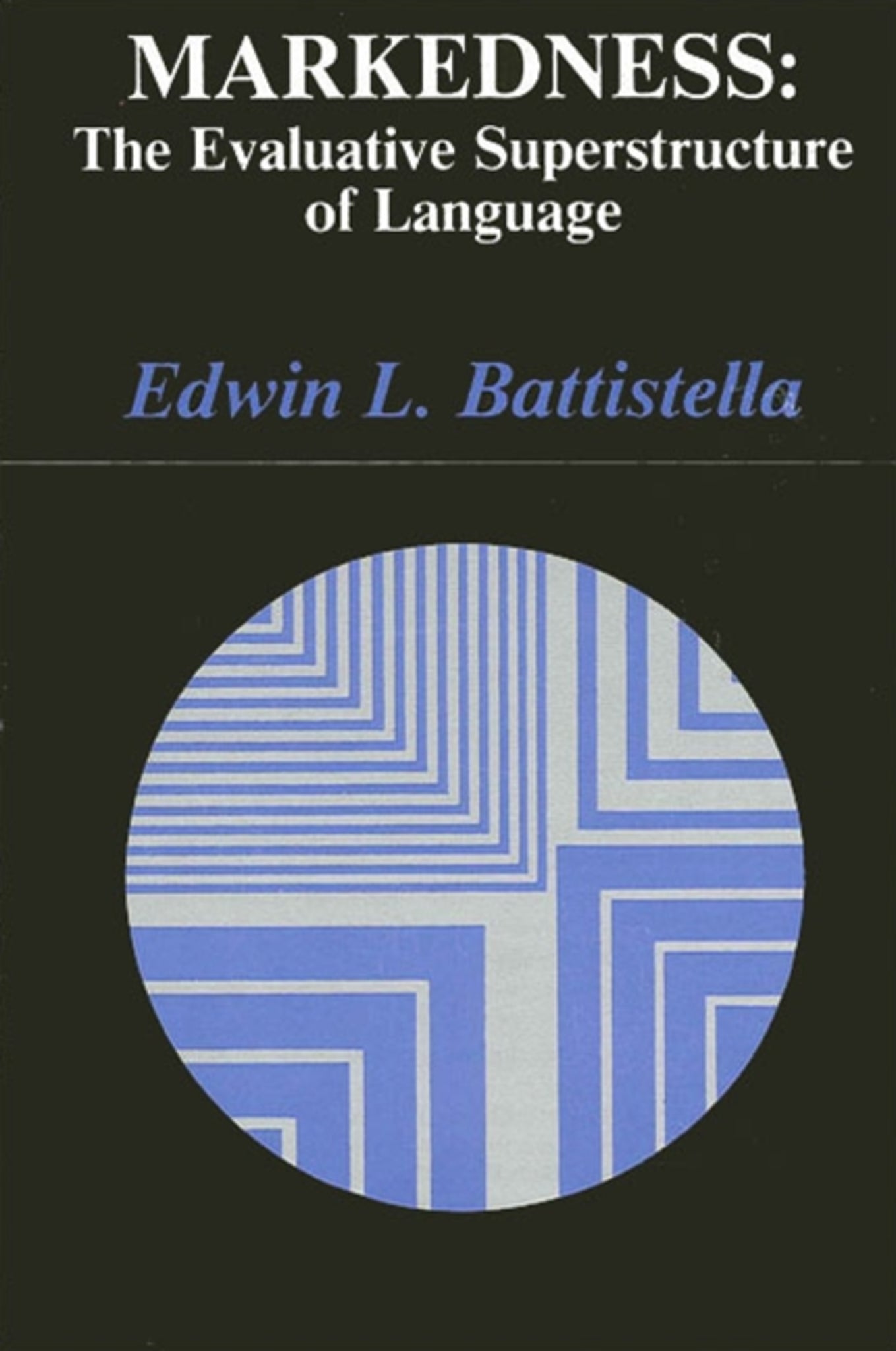We're sorry. An error has occurred
Please cancel or retry.
Markedness

Some error occured while loading the Quick View. Please close the Quick View and try reloading the page.
Couldn't load pickup availability
- Format:
-
25 September 1990

Battistella traces the development of markedness theory as a central part of structuralist theories of language. He outlines the concepts of marked and unmarked from Prague School structuralism to present day applications in linguistic theory and cultural analysis, using the reference point of English grammar and sound structure.
The author focuses on the fundamental asymmetry between terms of linguistic relationships, in which one term is more broadly defined and hence dominant (the unmarked term) while the other is more narrowly defined (the marked term). In addition to examining language-particular markedness relations evident in the structure and history of English, Battistella raises questions concerning universal asymmetries as well. He discusses the status of markedness as a unifying concept of linguistic structure and as a principle of language change.


"This work cuts across a large number of theoretical positions and shows how markedness interacts with them. Battistella integrates a great deal of material including new theories of language organization brought into comparison and relationship with older theories in insightful ways." — Margaret E. Winters, Southern Illinois University
Preface
Permissions
Acknowledgments
1. Prolegomenon to a Theory of Markedness
Markedness
Roman Jakobson: Linguista sum: linguistici nihil a me alienum puto
The Mystery of the Word: Opposition and Feature
The System of Language: Duality of Patterning and Hierarchization of Structure
2. On Markedness
Toward a Theory of Markedness
Markedness and Markedness Values
Semantic Markedness: Nonequivalence of Signifieds
Formal Marking and Distribution
Syncretization
Prototypes and Best Examples
Summary: Diagnostics of the Breadth of Meaning
Phonological Markedness
The Phonological Features and Markedness Reversals in Phonology
Markedness Reversals in Semantics
Syntactic Markedness
A Theory of Markedness
3. Markedness Principles and the Values of Grammatical Categories
Introduction: The Alignment of Units and Contexts
Case Oppositions
Nominative and Objective Cases
The Genitive
Elliptical Contexts
Zero-Objective and Zero-Nominative Pronouns
Reflexive versus Personal Pronouns
Singular and Plural in the Pronominal System: The Markedness of Singular Pronouns
Person, Gender, and Animacy
Summary: Values, Assimilation, and Form-Content Alignment
The Verbal Categories: An Introduction
Form Categories of the Verb
Semantics of the Verbal Categories
Finite Indicative Verbs
Verbal Aspect
The Progressive
Mood Distinctions
Finiteness and Voice
Word Order
The Complementarity of Form and Content
Summary: Determining Values and Finding Principles
4. Phonology, Morphology, and Morphophonemics
The Markedness Values of Phonological Features
Markedness Values of the English Consonants
The Markedness Assignments of Vowels and Glides
Marked and Unmarked Features in English Syllable Onsets and Codas
Sound-Meaning Diagrammatization in Morphology and Morphophonemics
Universality Revisited
Concluding Remarks in Markedness Patterns
5. Markedness and Language Change
Markedness in Theories of Language Change
Laws of Synchrony and Diachrony
Syntactic Naturalness as Complexity
Phonotactic Change as Unmarking
The Tendency Not to Accumulate Marks
Markedness Diagrams as a Goal of Change
The Shifting of Second Person Pronoun Forms
The Direction of Change
6. Retrospective and Prospectus
A Look Back
Wider Horizons
Right and Left in Symbol Classification
The Greeks
The Kaguru
The Nyoro
Markedness Assimilation in Symbol Classification
Inversions
A Few Final Examples
Notes
Bibliography
Name Index
Subject Index



